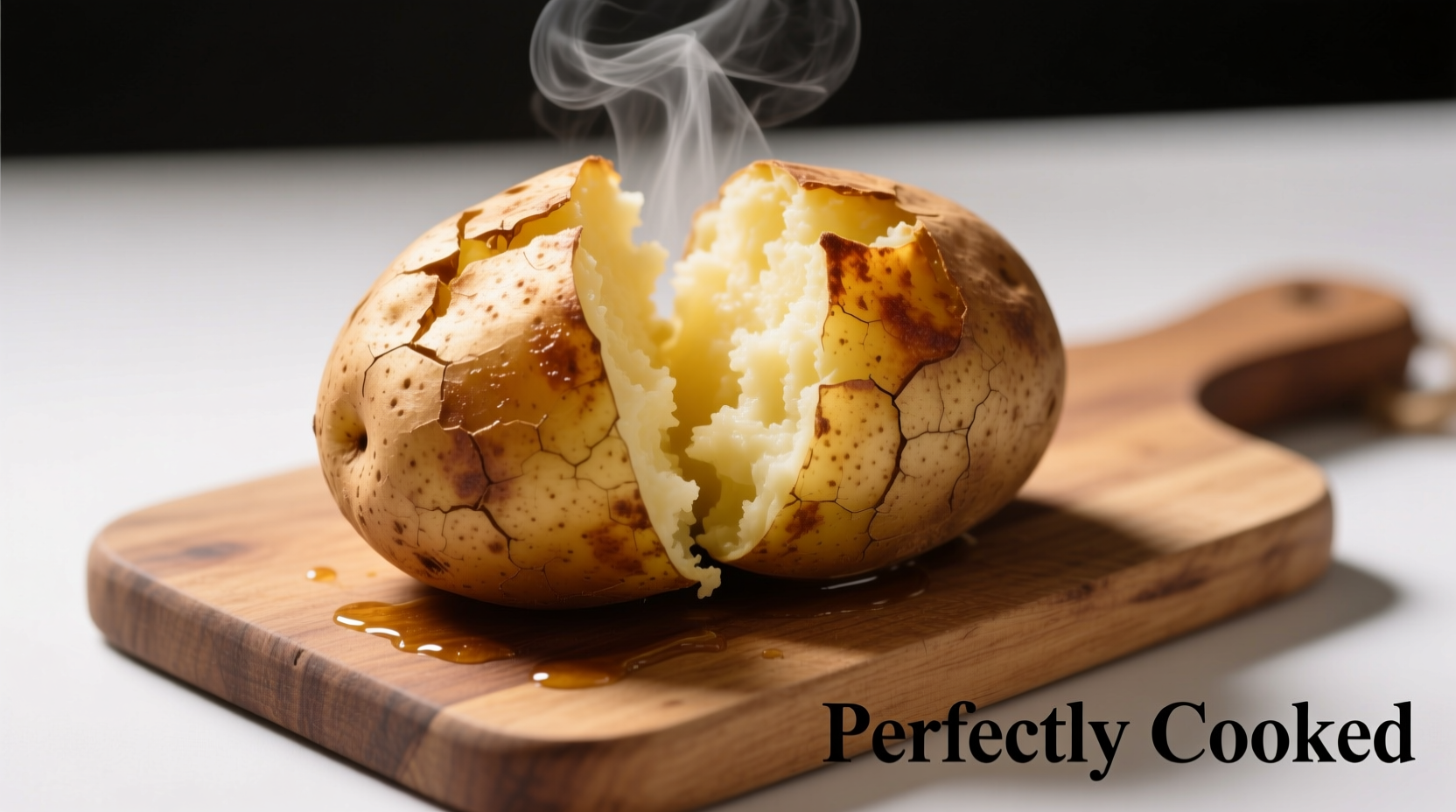Ever wondered why your baked potatoes never achieve that perfect crisp skin and fluffy center? You're not alone. Millions of home cooks struggle with this seemingly simple dish, not realizing that small technique adjustments can transform an ordinary spud into a culinary masterpiece. As a European cuisine specialist with over a decade of experience, I've discovered that understanding the science behind jacket potatoes unlocks consistent, restaurant-quality results every time.
The Essential Science Behind Perfect Jacket Potatoes
Contrary to popular belief, cooking a perfect jacket potato isn't just about timing—it's about understanding starch behavior and moisture management. When potatoes heat to 212°F (100°C), their starch granules absorb water and swell, creating that signature fluffy texture. But exceeding 230°F (110°C) causes excessive moisture loss, leading to dry, dense results.
According to research from the Royal Horticultural Society, Russet potatoes contain 20-22% starch—ideal for jacket preparation—while waxy varieties like Charlotte (14-16% starch) maintain structure better but lack that desirable fluffiness.
Step-by-Step Guide to Foolproof Jacket Potatoes
1. Selecting the Right Potato
Not all potatoes work equally well for jacket preparation. The key is finding varieties with the right starch-to-moisture ratio. Here's how different types perform:
| Potato Variety | Starch Content | Skin Thickness | Best For |
|---|---|---|---|
| Russet (Idaho) | 20-22% | Thick | Classic fluffy texture |
| Maris Piper | 18-20% | Medium | British-style jacket potatoes |
| Sweet Potato | 15-17% | Thin | Sweet flavor profile |
| Charlotte | 14-16% | Thin | Maintains shape, less fluffy |
2. Preparation Techniques That Make the Difference
Before cooking, proper preparation ensures optimal results:
- Dry thoroughly - Moisture on skin creates steam, preventing crispiness
- Oil application - Rub with 1 tsp sunflower oil per potato for crisp skin
- Strategic piercing - 4-6 deep punctures with fork to release steam
- Salt timing - Apply salt after cooking to prevent moisture loss

3. Cooking Methods Compared
Each cooking method produces different results. The UK Food Standards Agency recommends these temperature guidelines for safe potato preparation:
Oven Method (Recommended)
- Preheat to 400°F (200°C)
- Cook time: 60-75 minutes for medium potatoes
- Flip halfway through for even cooking
- Internal temperature should reach 205-210°F (96-99°C)
Convection Oven Shortcut
- Reduce cooking time by 25% with circulating hot air
- Place potatoes directly on oven rack for maximum airflow
Traditional and Creative Serving Suggestions
The beauty of jacket potatoes lies in their versatility. While British pubs traditionally serve them with butter, cheese, or baked beans, modern interpretations expand far beyond:
Classic British Toppings
- Cheese and chives (Cheddar or Wensleydale)
- Baked beans with grated cheese
- Creamy coleslaw and ham
Healthy Modern Variations
- Smoked salmon and Greek yogurt
- Black beans, avocado, and salsa
- Steamed broccoli with lemon zest
Nutritional Benefits You Should Know
Contrary to popular belief, jacket potatoes are nutrition powerhouses when prepared correctly. Research from NHS UK shows that a medium jacket potato with skin provides:
- 45% of your daily vitamin C needs
- 26% of your daily potassium requirement
- 3 grams of fiber (12% of daily value)
- Nearly twice the iron of white rice by weight
The skin contains up to 50% of the potato's fiber and significant amounts of iron and potassium—never peel before cooking!
Common Mistakes That Ruin Jacket Potatoes
Even experienced cooks make these critical errors:
- Wrapping in foil - Creates steamed potatoes rather than baked
- Skipping the oil - Results in tough, leathery skin
- Under-piercing - Causes potatoes to explode in oven
- Over-salting before cooking - Draws out moisture, creating dry texture
Perfect Pairings for Your Jacket Potato
Understanding flavor chemistry creates exceptional combinations. Potatoes contain glutamates that enhance umami flavors, making them ideal partners for:
- Aged cheeses (Parmesan, mature Cheddar)
- Mushroom-based toppings
- Smoked fish or meats
- Tomato-based sauces
For optimal flavor development, let cooked potatoes rest for 5 minutes before cutting open—this allows starches to set properly.











 浙公网安备
33010002000092号
浙公网安备
33010002000092号 浙B2-20120091-4
浙B2-20120091-4